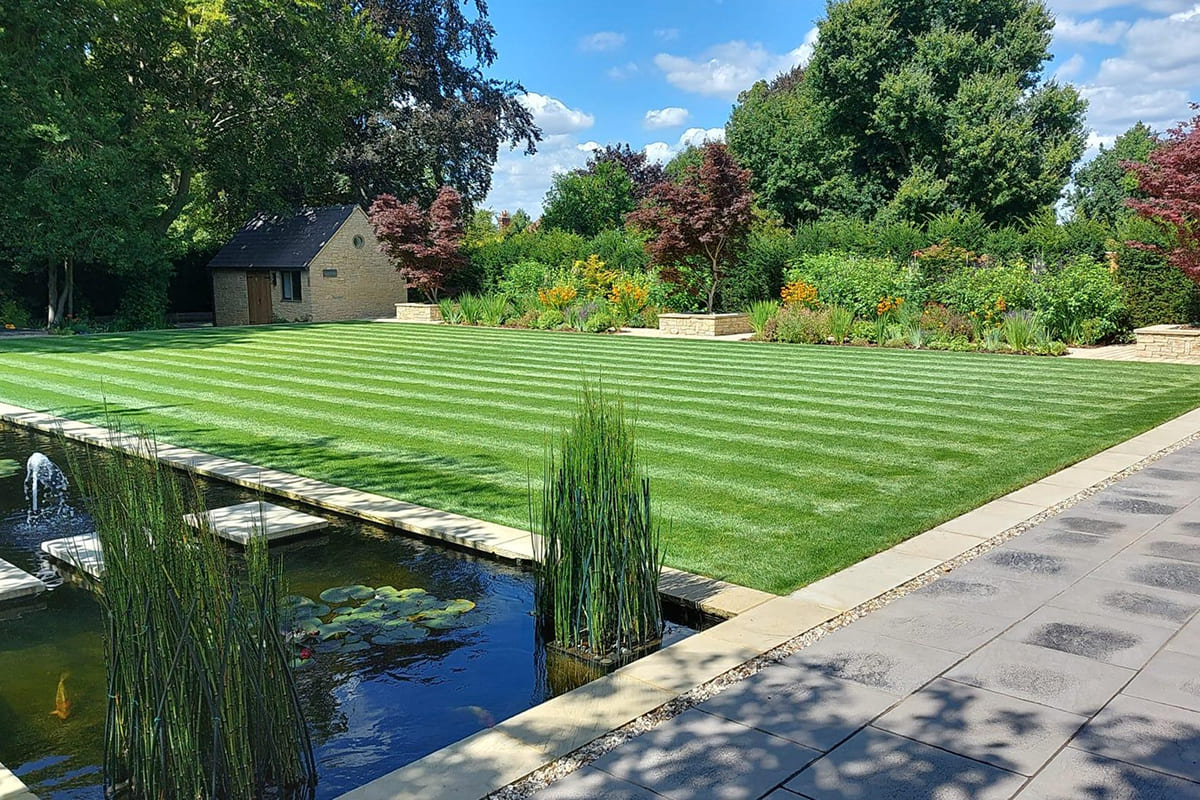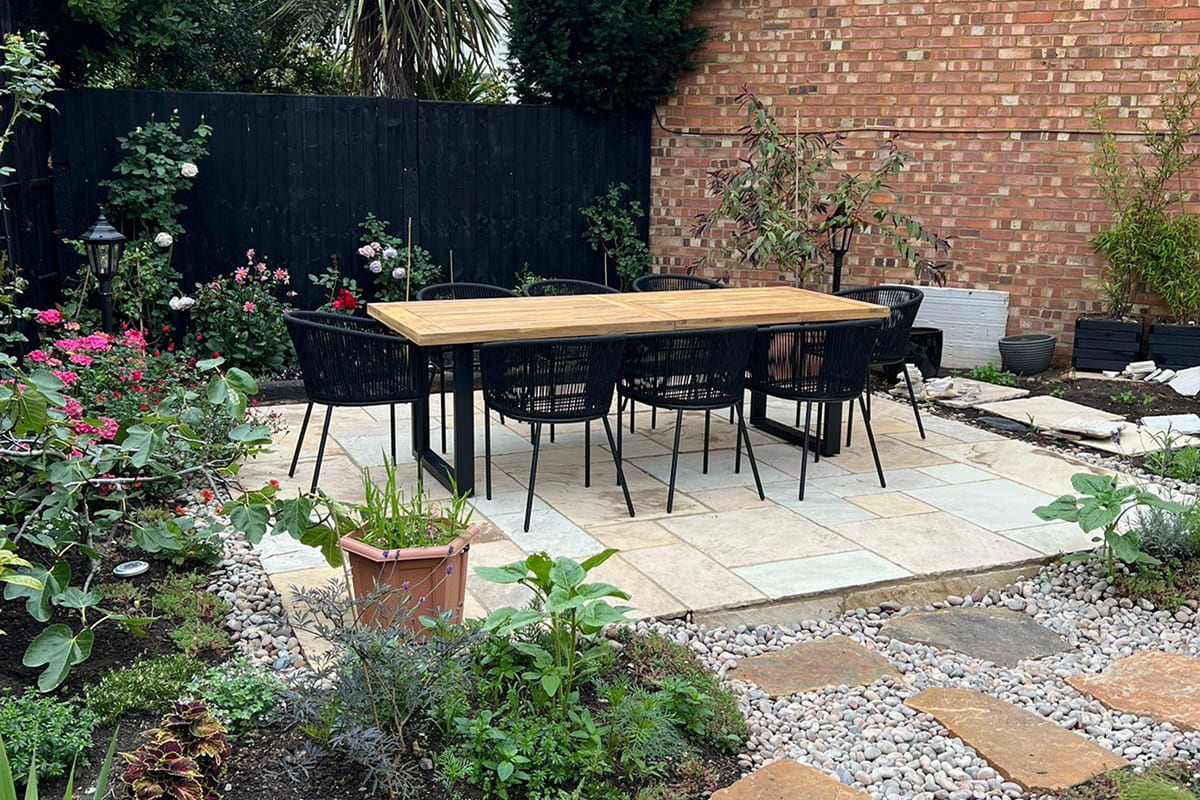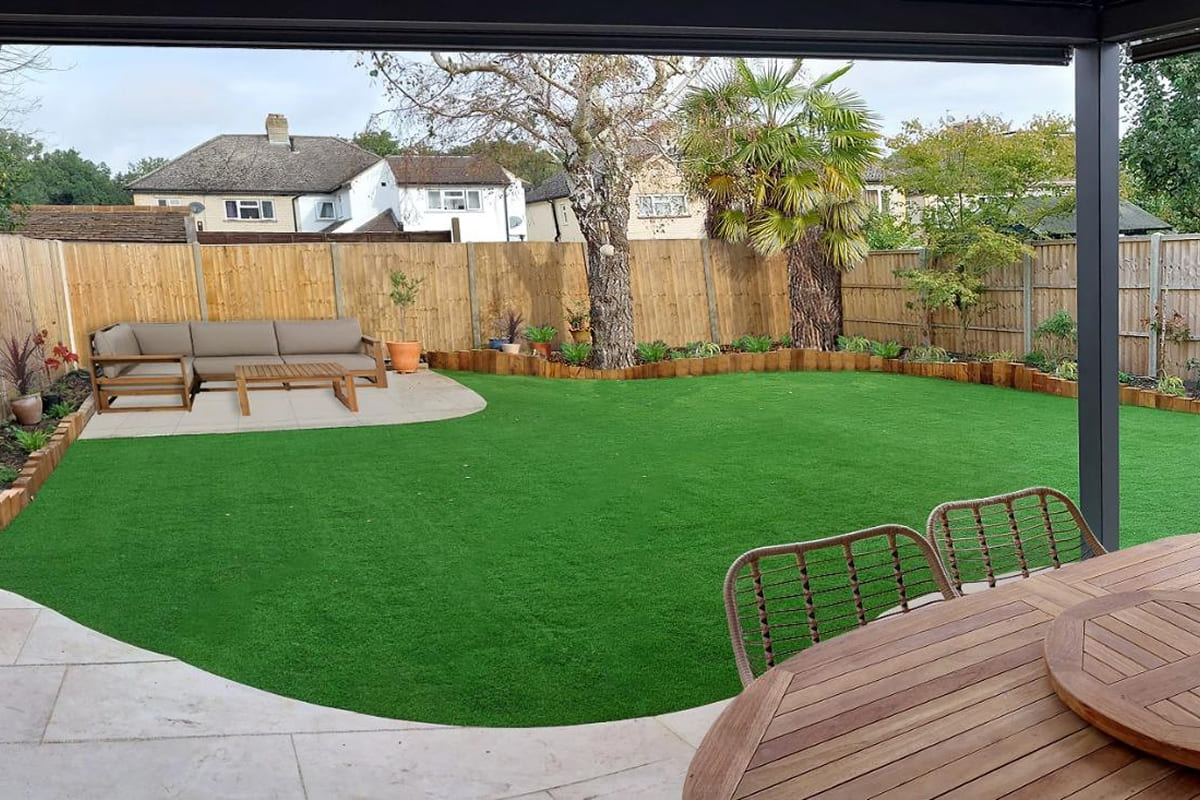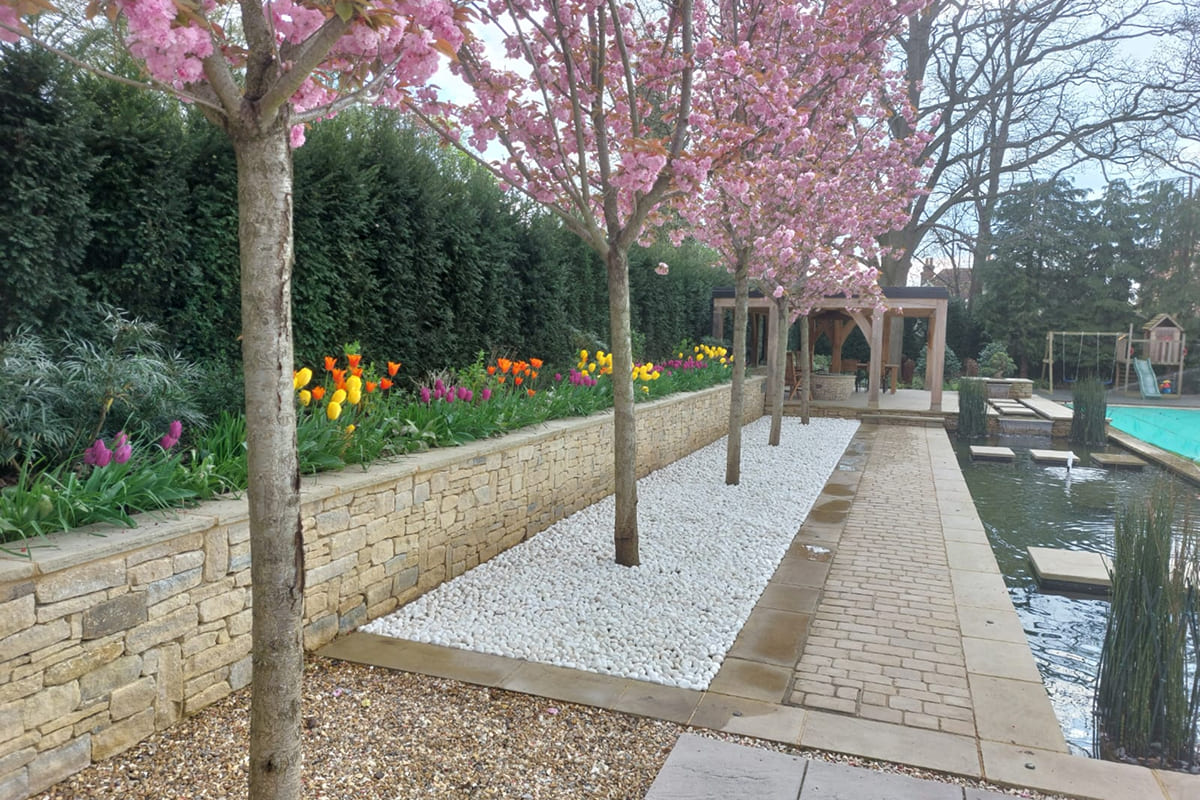Garden Designer
Why Hiring a Professional Garden Designer Elevates Your Outdoor Space
Your outdoor space holds immense potential. Whether you’re looking at a tired lawn, overgrown borders, or a blank canvas of soil, the right vision can transform any garden into something extraordinary. A professionally designed garden doesn’t just enhance your property’s appearance—it creates a personalised retreat that reflects your lifestyle and individual taste, increases your home’s value, and provides years of enjoyment. With expert guidance, your garden can also help you connect more deeply with your outdoor environment.
A skilled garden designer brings expertise that goes far beyond simply arranging plants. They understand how to balance aesthetics with functionality, select species that thrive in your specific conditions, and create outdoor spaces that evolve beautifully throughout the seasons. At Beautiful Spaces, we’ve witnessed countless transformations where homeowners discover possibilities they never imagined for their gardens.
The difference between a DIY approach and professional garden design becomes clear when you consider the complexity involved. From understanding soil composition and drainage to creating year-round interest and integrating sustainable practices, garden design requires knowledge that develops over years of experience. Building a career as a garden designer involves years of study, dedication, and a passion for both design and nature. Professional designers also bring fresh perspectives, helping you see your space in new ways and avoiding costly mistakes that can set back your garden plans by months or even years.
This comprehensive guide explores why investing in a professional garden designer is one of the best decisions you can make for your outdoor space. We’ll examine what garden designers actually do, the tangible benefits they provide, and how to choose the right professional for your project.

Introduction to Professional Garden Design
Professional garden design is both an art and a science, transforming outdoor spaces into vibrant, functional extensions of your home. Garden designers bring a unique blend of creativity and technical expertise to every project. Their work goes far beyond simply planting flowers—they create garden designs that reflect the lifestyle, tastes, and aspirations of their clients.
Modern garden designers use a variety of tools to bring their vision to life. From specialised garden design software that allows for detailed planning and visualisation, to collaborative platforms like Microsoft Teams that streamline communication with clients and contractors, today’s design process is more dynamic and interactive than ever. Whether you’re looking to create a tranquil retreat, a lively entertaining area, or a sustainable haven, professional garden design can help you achieve an outdoor space that truly enhances your quality of life.
No matter the size or complexity of your garden, a professional designer can develop a plan that maximises its potential. Their creative approach ensures that every element—from planting schemes to hard landscaping—works in harmony to reflect your vision and make your outdoor space a true extension of your home.
What Does a Garden Designer Do?
Garden designers are creative professionals who combine horticultural knowledge with artistic vision to create outdoor spaces that are both beautiful and practical. Their role encompasses far more than plant selection, involving careful consideration of every element that contributes to a successful garden.
Throughout the planning process, garden designers must effectively communicate their ideas and plans to clients and contractors to ensure that the vision is clearly understood and executed.
The planning process begins with a thorough assessment of your site. A professional garden designer evaluates factors such as soil conditions, drainage, existing vegetation, microclimates, and sun patterns throughout the day, taking careful note of site characteristics and features. They consider how you currently use your outdoor space and how you’d like to use it, whether that’s hosting dinner parties, growing vegetables, creating play areas for children, or establishing quiet meditation zones.
Plant selection forms a crucial component of garden design, but it’s informed by a deep understanding of growing conditions and design principles. Professional designers choose species that complement each other in terms of colour, texture, form, and flowering periods. They understand which plants will thrive in your specific soil and climate conditions, ensuring your garden maintains its beauty with appropriate maintenance requirements.
Hard landscaping integration represents another essential skill area. Garden designers coordinate pathways, patios, retaining walls, pergolas, and other structural elements to create cohesive outdoor environments. They understand how these features interact with planted areas and how to balance hard and soft elements for optimal visual impact and functionality, always considering the scale of features to ensure balance and proportion in the garden.
Lighting design has become increasingly important in modern gardens. Professional designers know how to use lighting to extend garden enjoyment into evening hours, highlight key features, and create atmosphere. They also consider practical aspects such as pathway safety and security.
Water features, from simple fountains to complex pond systems, require careful planning for both aesthetic and technical success. Garden designers understand water circulation, filtration, and maintenance requirements, ensuring these features enhance rather than burden your garden experience.

The Garden Design Process
The journey to a beautifully designed garden begins with a collaborative process between you and your garden designer. It all starts with an in-depth consultation, where the designer listens to your ideas, preferences, and practical needs for your outdoor space. This initial conversation sets the foundation for a garden plan that is tailored to your lifestyle and budget.
Next, the designer conducts a thorough site analysis, carefully noting the unique characteristics of your garden—such as soil type, climate, existing features, and the way sunlight moves across the space. This attention to detail ensures that every aspect of the design is suited to your specific environment.
Using a blend of traditional drawing techniques and advanced garden design software, the designer creates a detailed garden plan. This plan outlines the layout, hard landscaping elements, planting schemes, and special features, all customised to your vision. Throughout the process, the designer maintains open communication, often using digital tools to share updates and gather feedback, ensuring that your ideas are incorporated at every stage.
By working closely with a professional, you can be confident that the final design will not only look stunning but also function beautifully, bringing your dream outdoor space to life.
Creating a Garden Plan
A well-crafted garden plan is the blueprint for a successful outdoor transformation. Garden designers use a combination of traditional hand-drawing and cutting-edge software to create detailed, scaled representations of your garden. These plans include every aspect of the design, from the layout of paths and patios to the placement of plants, lighting, furniture, and water features.
Advanced tools like CAD drawing and 3D modelling allow garden designers to visualise the space from every angle, helping you see how the finished garden will look and function. This level of detail ensures that nothing is left to chance—every element, from hard landscaping to planting beds, is carefully considered and mapped out.
The garden plan serves as a guide for builders and landscapers during construction, ensuring that the project stays true to the original vision. It also provides a clear reference for you, the client, so you can track progress and understand how each feature contributes to the overall design. With a comprehensive garden plan in place, you can be confident that your outdoor space will be both beautiful and practical, tailored to your needs and ready to enjoy for years to come.
Landscape Design Principles
At the heart of every exceptional garden design are the core principles of landscape design. These guiding concepts—balance, proportion, harmony, and unity—help garden designers create outdoor spaces that are both visually stunning and highly functional. By thoughtfully arranging elements such as hard landscaping, planting, and open space, designers achieve a sense of order and flow that makes a garden feel inviting and cohesive.
Texture, colour, and shape play a crucial role in landscape design, adding depth and interest to the garden. Designers use contrasting forms and complementary colours to highlight focal points and create movement throughout the space. The careful selection and placement of elements—whether it’s a curved path, a sculptural tree, or a textured stone wall—ensures that every part of the garden contributes to the overall aesthetic and usability.
By applying these landscape design principles, garden designers can transform any outdoor space into a harmonious environment that reflects the client’s style and enhances the natural beauty of the site. The result is a garden that not only looks beautiful but also feels balanced, comfortable, and uniquely yours.
Sustainable and Eco-Friendly Garden Design
Sustainability is at the forefront of modern garden design, with more homeowners and garden designers seeking ways to create outdoor spaces that are both beautiful and environmentally responsible. Eco-friendly garden designs incorporate techniques and materials that minimise environmental impact while maximising the garden’s long-term health and resilience.
Garden designers often draw inspiration from many areas. Techniques such as rainwater harvesting, solar-powered lighting, and the use of drought-tolerant plants help reduce resource consumption. The incorporation of recycled materials—like reclaimed brick and timber—adds character to the garden while supporting eco-friendly practices.
Sustainable garden design also means creating habitats for wildlife, using native plants, and designing spaces that require less maintenance and fewer chemical inputs. By integrating these elements, garden designers help clients achieve outdoor spaces that are not only visually appealing but also contribute positively to the environment. Choosing a sustainable approach ensures your garden remains a thriving, living space for years to come, benefiting both your household and the wider ecosystem.

Benefits of Hiring a Garden Designer
Professional garden design offers numerous advantages that extend well beyond the initial visual impact. These benefits compound over time, making the investment increasingly valuable as your garden matures and evolves.
Personalised Design Solutions
Every garden should reflect its owners’ personalities, lifestyles, and preferences. Professional garden designers excel at translating your vision into practical reality while introducing elements you might never have considered. They listen carefully to understand how you want to use your space, whether you prioritise entertaining areas, productive growing spaces, wildlife habitats, or low-maintenance beauty.
Professional designers can customise every aspect of your garden to suit your individual preferences, from layout and features to plant choices and colour schemes. This personalisation extends to selecting colour schemes that complement your home’s architecture, choosing plants that align with your maintenance preferences, and creating focal points that reflect your interests.
Each object in the garden, from plants to features and decorative elements, is carefully selected and placed to achieve a cohesive and tailored result. The result is a garden that feels uniquely yours rather than a generic landscape.
Expert Plant Knowledge
Plant selection can make or break a garden’s success. Professional designers bring extensive knowledge of how different species perform in various conditions, their mature sizes, seasonal characteristics, and compatibility with other plants. This expertise prevents common mistakes such as choosing plants that outgrow their allocated space, selecting species unsuited to local conditions, or creating combinations that compete rather than complement each other.
Experienced garden designers also understand plant succession, creating designs that provide interest throughout all seasons. They know which plants offer spring flowers, summer foliage, autumn colour, and winter structure, ensuring your garden remains attractive year-round rather than peaking briefly then fading into mediocrity.
Increased Property Value and Kerb Appeal
Well-designed gardens significantly boost property values and create positive first impressions. Research consistently shows that quality landscaping can increase property values by 10-20%, making garden design one of the most cost-effective home improvements available.
Professional design also enhances kerb appeal through carefully planned sight lines, appropriate plant scaling, and cohesive colour schemes. These improvements benefit you while you live in your home and provide substantial returns when you eventually sell.
Sustainable and Low-Maintenance Solutions
Modern garden design increasingly emphasises sustainability and resource efficiency. Professional designers understand how to create beautiful gardens that require minimal water, reduce chemical inputs, and support local ecosystems. They select drought-tolerant plants for appropriate locations, design efficient irrigation systems, and incorporate composting areas and rain gardens.
Low-maintenance doesn’t mean no-maintenance, but professional designers can dramatically reduce the time and effort required to keep your garden looking its best. They achieve this through appropriate plant selection, strategic design layouts, and the incorporation of automated systems where beneficial.
At any point in the design process, adjustments and improvements can be made to better meet your needs and preferences, ensuring a truly personalised and evolving garden.

How to Choose the Right Garden Designer
Selecting the right garden designer requires careful evaluation of several key factors. The designer you choose will significantly impact both the process and outcome of your project, making this decision crucial to your garden’s success.
Portfolio and Past Projects
Reviewing a designer’s portfolio provides insight into their style, capabilities, and experience with projects similar to yours. Look for diversity in their work that demonstrates adaptability while noting consistent quality and attention to detail. Pay particular attention to projects that match your garden’s size, style preferences, and budget range.
Ask to see projects at different stages of maturity. Many designers can create impressive initial installations, but the best professionals design gardens that improve with time as plants establish and mature. Request contact information for previous clients if possible, as first-hand feedback provides valuable insights into the designer’s working style and post-installation support. Successful garden projects often involve a collaborative team of landscape architects, garden designers, and other professionals working together to achieve the desired outcome.
Qualifications and Experience
While creativity is essential in garden design, formal qualifications demonstrate commitment to professional standards and ongoing education. Look for designers with relevant horticultural or design qualifications from recognised institutions. Membership in professional organisations such as the Society of Garden Designers indicates adherence to professional standards and access to continuing education. It is also important that designers continue to learn and stay updated with the latest trends, techniques, and best practices in garden design.
Experience matters significantly in garden design, as practical knowledge accumulated over years of projects cannot be quickly acquired. However, don’t discount newer designers who demonstrate strong foundational knowledge and fresh perspectives. The key is ensuring their experience aligns with your project’s complexity and requirements.
Communication and Vision Understanding
Effective communication forms the foundation of successful garden design projects. During initial consultations, evaluate how well the designer listens to your ideas, asks relevant questions, and explains their approach. They should demonstrate genuine interest in understanding your lifestyle, preferences, and concerns.
The best garden designers can translate complex horticultural and design concepts into language you can easily understand. They should also be able to present ideas visually through sketches, plans, or digital renderings that help you visualise the proposed design.
Sustainability and Eco-Friendly Practices
Environmental consciousness has become increasingly important in modern garden design. Enquire about the designer’s approach to sustainable practices, including plant selection, water management, soil health, and wildlife habitat creation. The best designers integrate these considerations naturally into their designs rather than treating them as add-on features.
Ask about their knowledge of native plants, organic growing practices, and resource-efficient irrigation systems. Designers committed to sustainability can create gardens that are both environmentally responsible and beautiful, often with lower long-term maintenance requirements.
Effective marketing is also an important aspect of a successful garden designer’s business, helping them reach new clients and grow their practice.
Beautiful Spaces’ Approach to Garden Design
At Beautiful Spaces, our garden design process reflects our commitment to creating exceptional outdoor environments that exceed our clients’ expectations. Our systematic approach ensures every project receives the attention and expertise necessary for outstanding results. All design concepts and project management are developed and coordinated from our dedicated studio, where our team collaborates to bring your vision to life.
Consultation and Discovery
Every project begins with a comprehensive consultation where we listen carefully to understand your vision, lifestyle, and practical requirements. We assess your site’s unique characteristics, including soil conditions, drainage, existing vegetation, and microclimatic factors that will influence plant selection and design decisions.
This initial phase also involves discussing your budget, timeline, and maintenance preferences. We believe in complete transparency throughout the process, ensuring you understand all aspects of the project before we proceed to design development.
Concept Development and Planning
Following our site assessment and consultation, we develop initial design concepts that respond to your specific needs and site conditions. Our designs balance aesthetic considerations with practical functionality, creating outdoor spaces that are both beautiful and liveable.
We present concepts through detailed plans, plant schedules, and visual aids that help you understand how the finished garden will look and function. This collaborative phase allows for refinement and adjustment, ensuring the final design reflects your vision while benefiting from our professional expertise.
Implementation and Project Management
Our involvement doesn’t end with design approval. We provide comprehensive project management throughout the installation phase, coordinating with trusted contractors and suppliers to ensure quality workmanship and adherence to design specifications. Our team oversees the building and build phases of your garden, managing every aspect of the construction process to guarantee the highest standards of quality and attention to detail.
We source high-quality plants and materials, often accessing trade suppliers not available to the general public. Our established relationships with reliable contractors ensure installations proceed smoothly and efficiently, minimising disruption to your daily routine.
Aftercare and Ongoing Support
Garden establishment requires ongoing attention during the first growing seasons. We provide detailed maintenance guidance and remain available to address questions or concerns as your garden develops. Our aftercare service includes seasonal check-ups and advice on pruning, fertilising, and plant management practices that will keep your garden looking its best.
This comprehensive approach, combined with our commitment to creativity, quality craftsmanship, and client satisfaction, has established Beautiful Spaces as a trusted partner for garden transformations throughout our service area.

Current Garden Design Trends and Ideas
Garden design continually evolves as new ideas emerge and environmental awareness influences design decisions. Today’s garden designers work on a variety of landscapes, from small urban gardens to expansive country estates, showcasing their versatility and expertise. Understanding current trends can inspire your own garden project while ensuring your outdoor space feels contemporary and relevant.
There is a growing demand for garden design across the UK, with local expertise playing a key role in creating regionally appropriate and innovative gardens.
Wildlife-Friendly and Pollinator Gardens
Creating gardens that support local wildlife has become increasingly popular as homeowners recognise their role in supporting declining pollinator populations. These designs incorporate native plants that provide nectar sources throughout the growing season, along with habitat features such as log piles, stone walls, and water sources.
Pollinator gardens don’t sacrifice beauty for functionality. Many native plants offer stunning flowers and interesting foliage, while their adaptation to local conditions often makes them lower maintenance than non-native alternatives, such as cottage gardens, which rely on traditional plants, methods, and decoration. Professional designers can create wildlife-friendly gardens that are both ecologically beneficial and visually striking.
Low-Maintenance and Drought-Resistant Planting Schemes
Water conservation and reduced maintenance requirements drive much contemporary garden design. Drought-resistant plants, efficient irrigation systems, and strategic design layouts create gardens that remain beautiful with minimal intervention.
These schemes often feature plants with architectural forms, interesting textures, and extended flowering periods. Ornamental grasses, Mediterranean herbs, and drought-adapted perennials form the backbone of many modern designs, supplemented with carefully chosen trees and shrubs that provide structure and seasonal interest.
Outdoor Entertainment Areas and Kitchen Gardens
The trend toward outdoor living has intensified demand for gardens that function as extensions of indoor living spaces. Professional designers create seamless transitions between the house and the garden, ensuring outdoor spaces complement and enhance the architecture of the house itself. These designs often incorporate outdoor kitchens, dining areas, fire features, and comfortable seating zones.
Kitchen gardens have also experienced renewed popularity as more people appreciate fresh, home-grown produce. Modern kitchen garden designs integrate productive plants with ornamental elements, creating spaces that are both functional and beautiful. Raised beds, espalier fruit trees, and herb spirals can become attractive garden features while providing fresh ingredients for your table.
Modern Minimalist Design with Natural Features
Contemporary garden design often embraces clean lines, simplified plant palettes, and carefully chosen materials. These minimalist approaches rely on strong structural elements, sophisticated plant combinations, and attention to detail rather than complexity or abundance.
Natural materials such as stone, timber, and water features provide texture and interest within simplified designs. Incorporating pools has become a popular feature in modern garden design, adding both luxury and functionality to outdoor spaces. The ability to design gardens from scratch allows for complete customisation, ensuring every element is tailored to the client’s needs. It can be surprising how easy it is for homeowners to achieve professional results with the right guidance and support.
Tips for Creating a Contemporary Garden:
- Focus on clean lines and a restrained plant palette.
- Use natural materials for structure and texture.
- Incorporate features like pools or fire pits for added interest.
- Plan the layout from scratch to maximise customisation and functionality.
Transform Your Outdoor Space with Professional Expertise
The decision to hire a professional garden designer represents an investment in your property, lifestyle, and daily enjoyment of your outdoor space. The benefits extend far beyond initial visual impact, encompassing increased property values, reduced maintenance burdens, environmental sustainability, and years of personal satisfaction.
Professional garden designers bring irreplaceable expertise that combines horticultural knowledge, design skills, and practical experience. They can transform ordinary outdoor spaces into extraordinary environments that reflect your personality while functioning beautifully for your specific needs.
The collaborative process of working with a skilled designer often reveals possibilities you never imagined for your space. Their fresh perspective, combined with technical expertise and access to quality plants and materials, can create results that far exceed what’s achievable through DIY approaches.
If you’re searching for a skilled garden designer to create your dream outdoor space, Beautiful Spaces is here to help. Our comprehensive approach ensures every aspect of your project receives expert attention, from initial consultation through ongoing maintenance support. Contact us today to schedule your consultation and begin the exciting process of transforming your garden into the outdoor sanctuary you’ve always envisioned.
Frequently Asked Questions
What is the difference between a garden designer and a landscaper?
A garden designer focuses on planning the layout, style, and planting schemes, while a landscaper typically handles the construction and installation work. Garden designers create the vision and detailed plans, whereas landscapers implement these designs through practical construction and planting activities.
How much does it cost to hire a garden designer?
Costs vary depending on garden size, complexity, and materials selected. Beautiful Spaces provides personalised quotes after an initial consultation, ensuring our proposals reflect your specific requirements and budget parameters. We believe in transparent pricing that delivers exceptional value for your investment.
Can a garden designer help create a low-maintenance garden?
Yes, professional garden designers excel at creating low-maintenance gardens through strategic plant selection, efficient design layouts, and incorporation of automated systems where appropriate. They select plants and design elements that reduce upkeep while maintaining visual appeal throughout all seasons.
Do I need planning permission for garden design work?
Most garden projects don’t require planning permission, but certain structures, drainage modifications, or works near boundaries may require approvals. Beautiful Spaces can advise whether your project requires any permissions and guide you through application processes if necessary.